
Left to right: the Benedum-Trees Building (built 1905 as the Machesney Building, architect Thomas Scott); the Investment Building (1927, John M. Donn); and the Arrott Building (1902, Frederick Osterling).

Left to right: the Benedum-Trees Building (built 1905 as the Machesney Building, architect Thomas Scott); the Investment Building (1927, John M. Donn); and the Arrott Building (1902, Frederick Osterling).

So called because it was built in the year of the Centennial, 1876. We have not yet discovered the architect (and neither has anyone else, so far as we know), but it is a work of rare taste. The ground floor has been modernized, but in a sympathetic way that does not detract much from the elegance of the overall composition.

The Law & Finance Building was a rather old-fashioned skyscraper when it went up in 1927–1928. It was designed by Philip Jullien of Washington (D. C., where he wasn’t allowed to design skyscrapers, owing to city height limits that are still uniquely in place) in the base-shaft-cap formula typical of the early age of skyscrapers. It even has the regulation bosses’ floor above the base.

What is unique is the row of ornamental heads above the bosses’ floor, perhaps representing the severed heads of the developer’s political opponents.
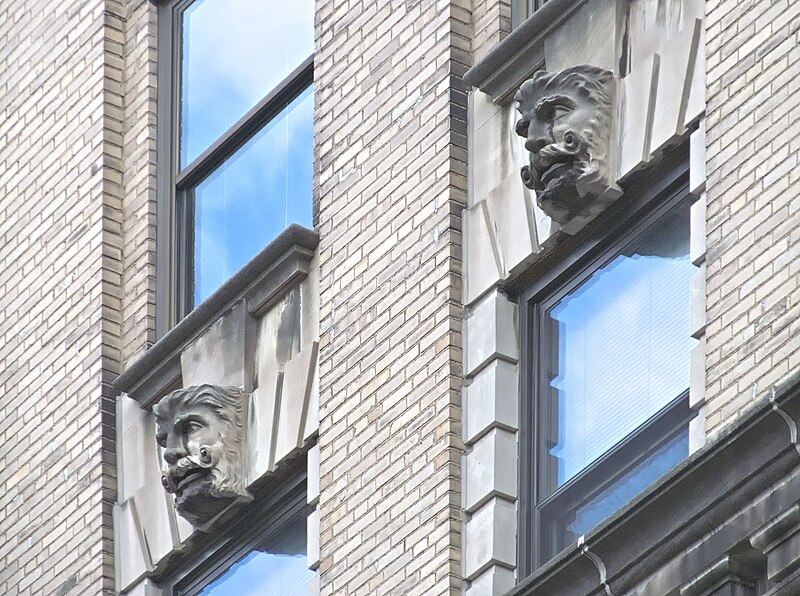

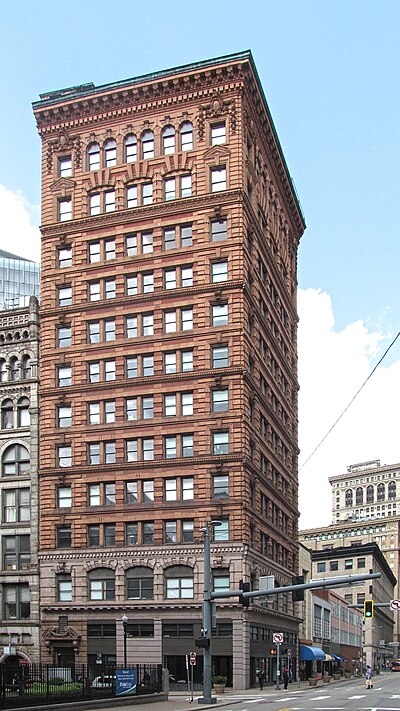
Built in 1903, this early skyscraper was designed by Alden & Harlow, who festooned it with terra cotta.
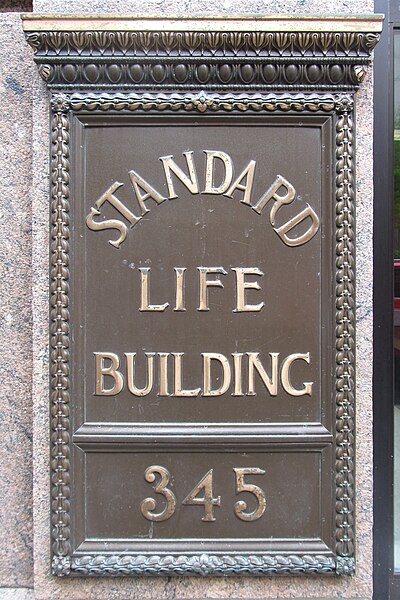




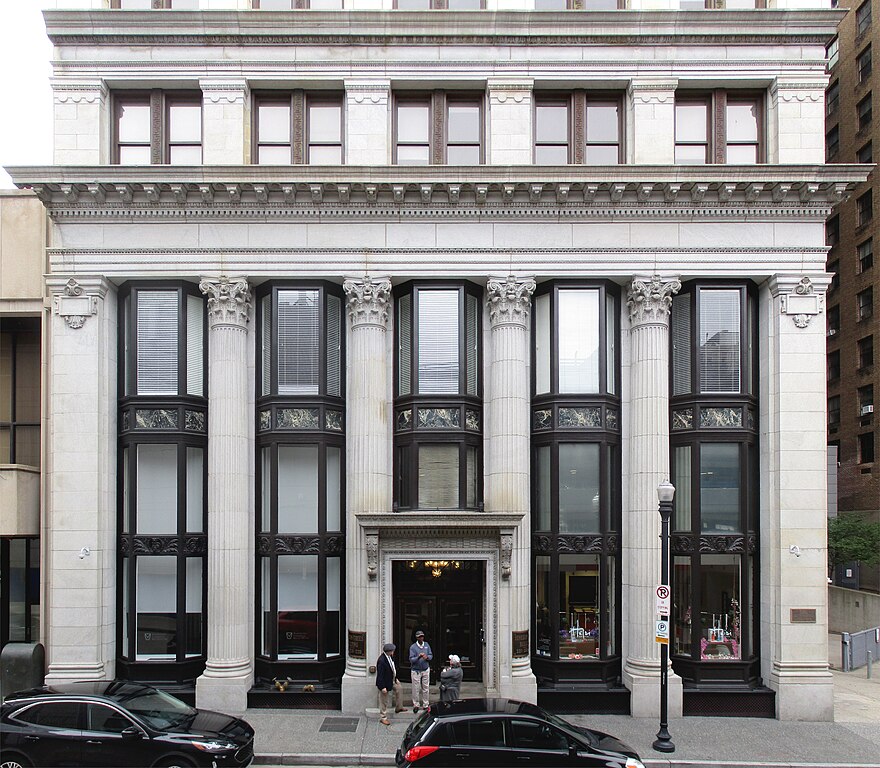
Built in 1905 as the Machesney Building, this early skyscraper was designed by Thomas Scott, who kept his office there, which doubtless made a strong first impression on potential clients. It was renamed eight years later when it was bought by a pair of oil barons, and it has been the Benedum-Trees Building ever since.
Here we see the generous base of the building, with three-storey Corinthian pilasters and huge windows. Above it is the “bosses’ floor.” For a short lesson in reading a Beaux Arts skyscraper like this, see our article on the West Penn Building.
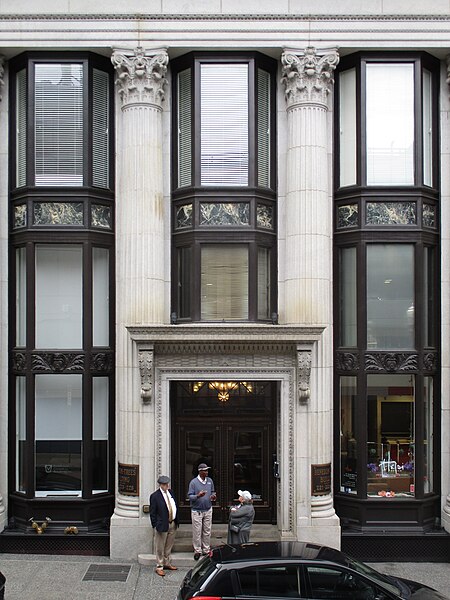
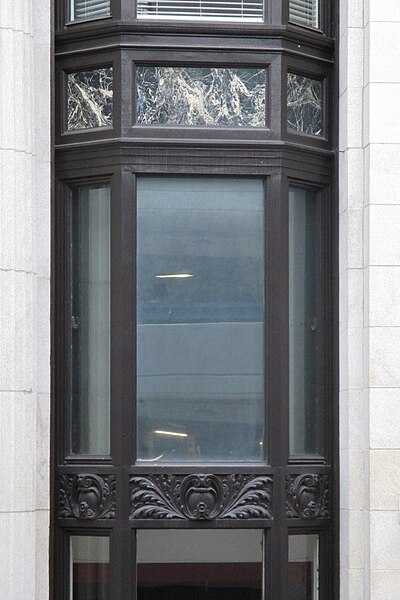
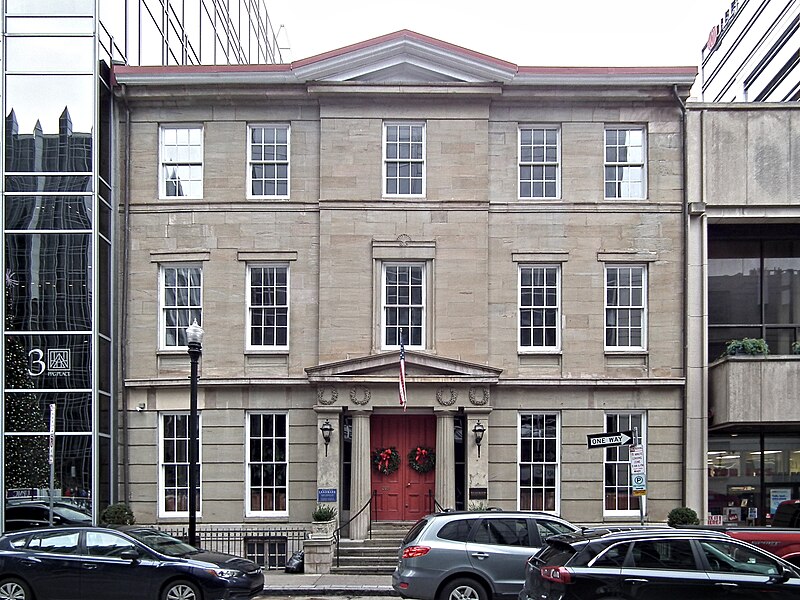
Designed by John Chislett, our second resident professional architect (Benjamin Latrobe was our first), the Burke Building opened in 1836. It just missed the Great Fire nine years later, and it was substantial enough to remain valuable through the many booms that followed, so that it has survived to be the oldest building downtown outside Fort Pitt. That seems astonishing when we recollect that there had been a city here for 78 years before this building was put up, but flood and fire wiped away much of what came before, and prosperity destroyed the rest.
We are lucky to have the Burke Building. It is a particularly elegant example of Greek Revival design, and it manages to create a very rich appearance with minimal ornament. Young architects would do well to imitate it.


The Brookline Connection site has a page on the Burke Building with some interesting historical pictures.

Fourth Avenue, the second-biggest American financial center after Wall Street, was famous for its bank towers. But one bank decided to go long instead of high. The Colonial Trust Company built a magnificent banking hall that ran right through from Forbes Avenue to Fourth Avenue, skylit all the way. Pittsburghers passing between Fourth and Forbes, especially in cold weather, would take the route through the bank so regularly that the hall became known as Colonial Avenue.
Frederick Osterling was the architect, and he designed this magnificent Corinthian face for the Forbes Avenue side.

What would a bank be without its lions?

Home-repair tip: if your pediment is broken, you can fill the gap with a baroque cartouche.
Two years ago, old Pa Pitt got pictures of the other entrances as well, so the rest of the pictures are reruns.
The Fourth Avenue side is in the same style, but narrower:

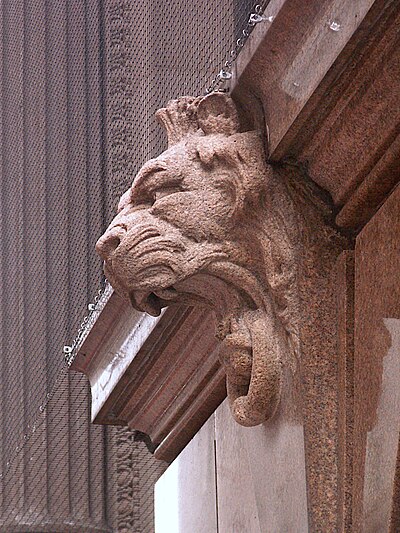
This side also has its lions.
In 1926, the bank decided to expand by building another equally magnificent hall perpendicular to the first, with an entrance on Wood Street. Osterling was the architect again—but fashions, and Osterling’s own taste, had changed.

Instead of florid Corinthian, this side is in a simpler Ionic style. The outlines are cleaner, and the wall of rectangular panes of glass and the shallow arch at the top seem almost modernistic. It is still a bravura performance, but perhaps a more perfectly controlled one.
Fortunately the whole building has been adapted as Point Park’s University Center, so it is not going anywhere, for the near future at any rate.
Here is how the Land Trust Company building (later the Commercial National Bank) looked in 1905:

And here is how it looks today:

Much better, isn’t it?